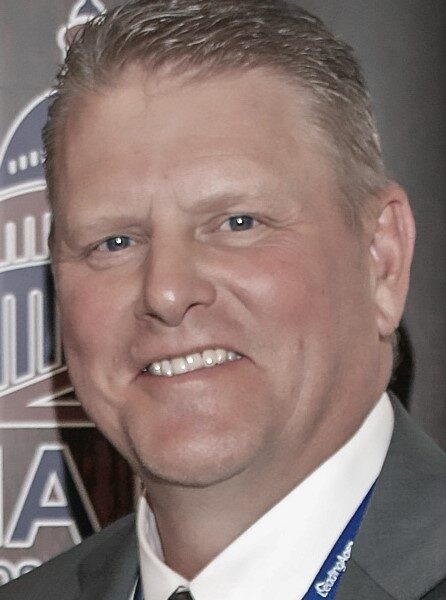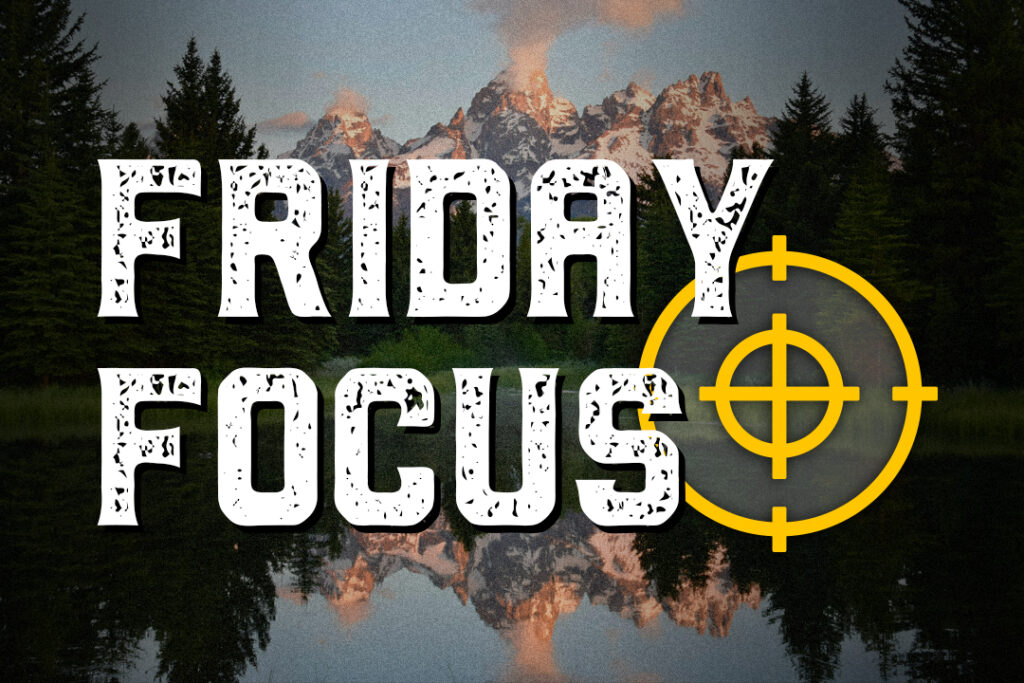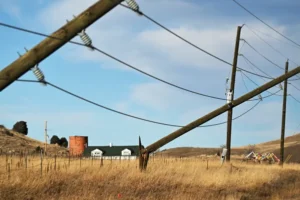FRIDAY FOCUS: State of Wyoming Medical Services is ‘Tenuous,’ Says Top Health Care Official (Part 2)
Eric Boley explains the challenges of the post-COVID landscape and what’s next for health care in state
- Published In: Other News & Features
- Last Updated: Jul 07, 2023

Eric Boley, president of the Wyoming Hospital Association, would like to "streamline and improve the prior authorization process with insurance companies" to help patients "get the care they need more quickly." (Courtesy photo from the Wyoming Hospital Association)

By David Dudley
Special to the Wyoming Truth
Eric Boley is afraid of failure. As president of the Wyoming Hospital Association, he has seen it knock at the door for three years and counting, as hospitals across the state inch toward a financial cliff. For some of them, closure isn’t out of the question.
“The stakes are literally life and death,” Boley said. “If we were to lose the hospital in Rawlins — Memorial Hospital of Carbon County — there would be 200 miles of interstate with no hospitals.”
That’s not empty conjecture. Memorial lost roughly $11 million during the pandemic. And the hospital cut obstetrics and maternity care last year. For that, mothers and their families must travel to Ivinson Memorial Hospital in Laramie. In that respect, Boley’s fears are coming true.
Boley spoke with the Wyoming Truth about the challenges the state faces; what the failure of Medicaid expansion means for providers, facilities and citizens; and what the future of health care in Wyoming may hold. Part one can be found here. What follows are excerpts from part two of the conversation.
Have hospitals seen patient volumes and revenue rebound since the pandemic?
Boley: We haven’t seen a rebound, honestly, in either. Some people sought treatment in other states from other providers, and they haven’t gone back to their communities. But in these small communities, it’s always very tenuous. They’re never really flushed with money. But we’ve also seen a decrease in tax revenue. And tax revenue helps to sustain a lot of these critical access small hospitals in rural communities. Expenses have gone through the roof with inflation and other things.
Can you give an example?
Boley: We used a lot of traveling nurses during the pandemic. We were accustomed to using travelers before, but not to the degree that we had to during the pandemic. We used to pay around $70 or $80 an hour for a traveling nurse. During the pandemic, we were paying between $200 and $300 an hour for a registered nurse. There was some federal funding, but they came to help offset that.
There’s a bunch of different extenuating circumstances. They’re having to pay higher salaries now. It’s expensive to recruit practitioners to Wyoming. You know, it takes the right person to come out here to work, especially in our rural communities. And when you’re recruiting providers, you’re really recruiting their spouses or their significant others to make sure they’re happy there. So it’s been one thing after another that has deteriorated the financial health of our facilities.
What about the failure to pass Medicaid expansion during the last legislative session? How does that impact facilities and citizens?
Boley: We believe that based off of what we’ve seen in Montana and Idaho, and the other 40-odd expansion states, that expanding Medicaid would help decrease our uncompensated care.
Right now, our hospitals deliver somewhere between $120 and $140 million in uncompensated care annually. That’s just the cost of delivering that care. It’s not based off of their charges. That’s the actual cost to deliver that care. We’ve seen other states where that amount has been decreased by 20% to 30%, which is a significant chunk of money.
If we take Colorado as an example, most, if not all of, their Critical Access Hospitals are now in the black and are thriving because of Medicaid expansion. Obviously their politics and the way their Department of Health operates down there is different than ours.
How so?
Boley: We think that we have about 18,000 to 20,000 people that have no coverage right now. With Medicaid expansion, some of them would have some coverage, and we’d receive some payment, as opposed to no payment. Now, Medicaid’s not the greatest payer source in the world. But we’d get paid something other than nothing.
The other benefit, from a systematic perspective, is it would give uninsured and underinsured folks coverage, and they would come in and receive more preventive care. Right now, when they do come in, they’re the sickest that they could be. And it costs a whole lot more to provide that kind of care.
Also, if we were providing more preventive care, we’d keep ’em healthier for longer, and, hopefully, that would help ’em get into the workforce and fill some of the needs around the state.During the pandemic, people were in dire financial straights, so they weren’t seeking care unless they absolutely had to.
Meanwhile, hospitals still have to pay staff.
Boley: Right. Fixed costs are already super high to begin with, because you’ve got to staff them 24/7. You’ve always got to be ready for the “what-ifs.” If the what-ifs don’t come, you’re not generating any revenue. But you still have expenses. In Wyoming, those fixed costs, especially when you’re living in a small rural community, you’ve got to see patients to keep out of your reserves, right? The pandemic has really created the perfect storm.
What’s next for health care in Wyoming?
Boley: Honestly, with the current state of politics in our state, I don’t really intend to spend a great deal of time on Medicaid expansion. The numbers just aren’t there. It takes a two-thirds majority vote to even introduce a bill. So we’re gonna focus more on protecting what we have.
We’ve got to take a look at what we can do to sustain our hospitals and nursing homes. Nursing home rates have been frozen, or even reduced, over the last 10 years. They haven’t had any increases for cost of living or any of the other indexes. We’re working with Gov. Gordon. One nice thing that he did, through the supplemental budget, is add $11 million to help nursing homes. That will be matched dollar for dollar. So, it’s actually $22 million for this next year to help those homes continue to provide care.
There are some other programs, mental health programs, especially, that need to be funded. Hospitals haven’t seen any inflation or cost of living increases. There were actually cuts over the last several years, but those cuts have finally been restored.
What else would you like lawmakers to consider for the next session?
Boley: I would hope that our state recognizes, and that the legislature recognizes, that as they go into their budget session, we need to work to streamline and improve the prior authorization process with insurance companies. We think it’ll help patients to be able to get the care they need more quickly. But we also need to ensure that prior authorizations are honored once they’re done. Right now, insurance companies have the ability to look back 10 years, and if they determine that they overpaid for services, they can “claw back” payments from 10 years back.
Fixing that will help with cash flow issues within the hospitals, so they’re not spending months and months fighting with the insurance companies to get paid for the services rendered. Those things are really important to maintain the quality of care and the kinds of care that we can provide, across the state.













